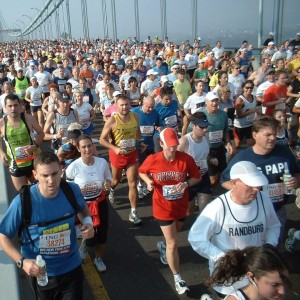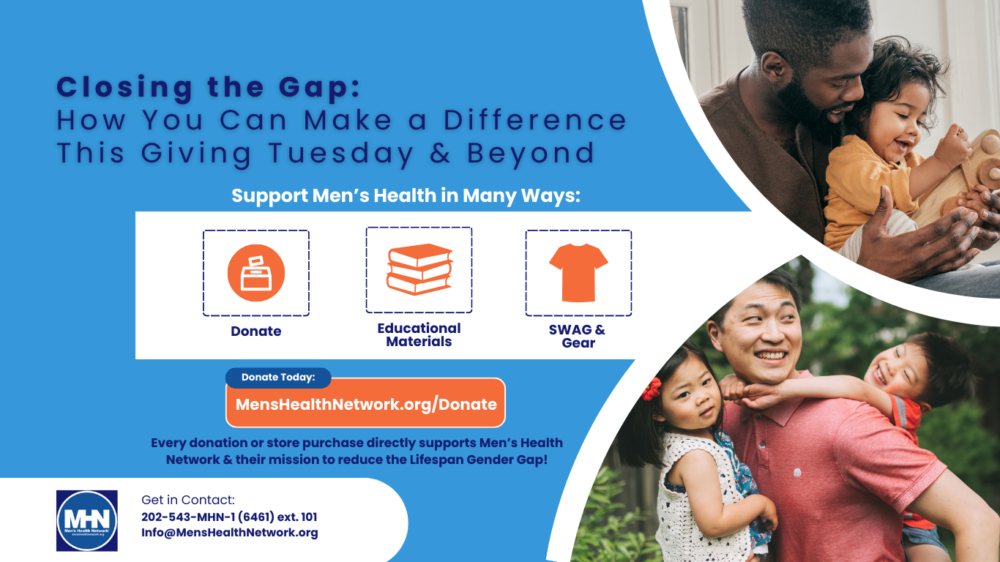The New York City Marathon is rapidly approaching. With it will come many common overuse injuries in the runners I serve in Westchester County and beyond.
Many runners will suffer from the same, mostly avoidable common running injuries.
With 4-6 weeks left to train for the NYC marathon is when we will see the most severe forms of overuse injuries. “Catching Up” is a bad training concept.
Training Considerations/Risk Factors for Running Injuries:
Improper Training
-

New York marathon Verrazano bridge — Wiki Creative Commons We see some of the most common injuries in the novice runners… novice runners become very excited at the thought of running the marathon and they put everything they have into training. Many do not even know about the 10% rule and go about training a bit too aggressively.
- The 10% rule is quite simple. You do not increase your mileage, (cadence and/or speed) more that 10% per week in the months leading up to a marathon. There is a reason it takes most more than 4 months to prepare.
- Running requires strength and stability. Do your planks, strengthen your hips, and thighs. This will diminish your risk of injury and make you a better runner.
- Cross training… yes, I know most runner hate it. But the science is clear. One bike ride/week will make you a better runner and possibly decrease your risk of injury.
- Follow the 80/20 rule. Most runners train too hard.
Strike Pattern
The debate about where your foot should strike the ground rages on. Many favor mid-foot strikes to soften the blow, while some claim that low drop shoes and a heel strike with distribute the stresses more naturally. The literature is not firm on this, but as noted below… mid-foot strike might not as soft of a landing as we once thought.
- Heel
- Midfoot
Form
A slight forward lean, through the ankles will not only improve your pace. It has actually been shown to decrease the force of running and the pounding your knees take.
Shoewear
- Low drop
- Typical – heel elevated
- Bottom line .. Find the proper shoe for you. This post will help. Science shows it’s easier than you think.
Improper Recovery
- Take your recovery weeks seriously.
Much of your training should be done in zones 1-3. Very little of our training should be performed in zone 4. This post covers how the intensity of your run is a more important variable then the pace your are trying to adhere to. Adhere to the 80/20 rule to minimize your risk of over-training, improper recovery and being prone to injury.
The most common running injuries are
- Stress fractures
- Tibia
- Metatarsals (foot)
- Femur
- Hip
- Medial Tibial Stress Syndrome (Shin Splints)
- Achilles Tendinopathy
- ITB Friction Syndrome
- Runners Knee: Anterior knee pain syndrome
Stress Fractures
Stress fractures occur because you have exceeded the amount of force that your bone can take. The internal scaffolding of our bones actually becomes thicker when exposed to stress. If you follow the 10% rule, then your body will be able to manufacture new bone and repair any damaged bone before any problems set in. If you try to push too hard, the scaffold inside the bone will begin to falter and break. That break will become larger and larger unless treatment is started, and the excess stress eliminated.
Most stress fractures can be managed with a change in your activities. Some stress fractures, particularly those around the hip require urgent attention and might require surgery.
Medial Tibial Stress Syndrome (MTSS)
There is so much written about medial tibial stress syndrome or MTSS, and much of it is wrong 🙁
MTSS occurs due to the irritation of the attachment of one of your calf muscles (soleus) to the lower, inner portion of your tibia or shin. Similar to stress fractures in the bone, the tissue that attaches this muscle to the tibia will thicken and strengthen its attachment over time. The bone will also adapt in the same area. If you over achieve, you might stress the tissue or bone … and it can be VERY painful. Other factors can contribute, but they are very complex. Over-pronation might be more common in people with MTSS, but it does not appear to be causative. There is a lot of interest in impact reduction to diminish the risk of injury. Some “experts” favor a mid-foot strike, while other “experts” suggest the use of “low-drop” shoes. The jury is out, but some papers suggest that low drop shoes might be better and impact force reduction than a mid-foot strike.
Medial tibial stress syndrome will get better for most everyone — with rest. I know, you have a marathon to run, etc, etc… unfortunately you need to get over that 🙁 Many docs might give you orthotics, boots, etc… but the literature shows that rest is as good if not better than any other treatment for medial tibial stress syndrome. Surgery for medial tibial stress syndrome is nearly never necessary.
Achilles Tendinopathy
The achilles tendon has brought down mythical warriors and many runners. This recent post goes into depth on diagnosis and management of achilles tendinopathy.
Stretching is generally beneficial for many. Static stretching and eccentric stretching are both useful, depending on how painful your achilles is when you start a recovery program. Unfortunately, achilles tendinosis can be a recalcitrant problem that keeps coming back. And sadly, PRP injections, etc are not beneficial in this area.
Ilio-Tibial Band Friction Syndrome
ITB Syndrome is a very common cause of pain on the outside of your knee. You will find it very tender to touch as well. ITB Syndrome is caused by the ITB tendon on the side of our leg popping over the side of our femur repetitively. Physical therapy, foam rolling, rest, NSAIDS, and perhaps an injection will usually nip this in the bud early. See the article in this blog for more in-depth information.
Runners Knee
A runners knee is also referred to as anterior knee pain syndrome (AKPS). The term runners knee has been mis-used to describe anything that bothers a runners knee :-). However, it is a very common and distinct entity unto itself. It is characterized by pain in the front of the knee. It can be mild or severe. The actual cause is unknown. All patients with a runners knee have weak HIP musculature and poor pelvic and core stability… but that does not mean that weak hip muscles are the cause of AKPS. I go into far more depth on AKPS in this post and this post as well.
Most of you with a runners knee will respond very well to a program to improve your core stability (planks, etc), and a dedicated hip strengthening program hitting all the muscle groups.
Hats off and congrats to all of you who plan to run the NYC marathon this coming November. Don’t try and “catch up”, it truly is a recipe for a stress injury. Stay on your program, follow the 80/20 rule and the 10% rule and your risk of injury is diminished dramatically.




This is quite an interesting post. I enjoy running myself, and have participated in some 5K running events. That said, I have rarely thought about my training intensity: perhaps more is not always better. Sometimes, there is little more important than proper recovery. Furthermore, it is interesting to think about where one’s foot actually strikes the ground, and how that affects the impact put on the knees.